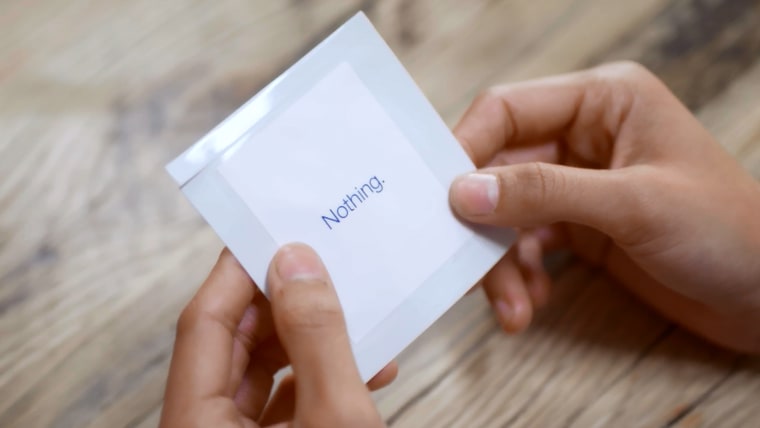Even if you’re not superstitious, you probably have a lucky charm of sorts: Your fanciest blazer, or a favorite pair of shoes. You put it on and instantly love the way you look, which in turn makes you more confident.
In a TODAY.com survey, 46 percent agreed you'd take something that made you FEEL more beautiful.
That’s kind of the idea behind a new ad campaign, which premiered Wednesday on TODAY in a segment sponsored by Dove: A handful of women are told that they’re going to help test a “revolutionary” new beauty product: the very science-y sounding RB-X, a “beauty patch.” They wear the patch for two weeks and document how it’s made them feel, using video diaries. And they say the patch has made them feel more beautiful, and, subsequently, more confident.
[Dove is a sponsor of TODAY.]
"I've been more comfortable in clothes I didn't wear before, more comfortable doing my hair differently, showing off my face more," said one of the participants, Tahnee, after wearing the patch 12 hours a day during the test.
"I've been more social with the patch on," said Tracey.
"I'd love people to have the kind of change that I've had," said Brihtney.
In the end (spoilers, in case you want to watch the ad for yourself!), psychologist Ann Kearney-Cooke reveals to the women that there was never actually anything in the patch, and that the confidence they got from feeling beautiful was within them, the whole time! It’s one of those warm-fuzzy ads that Dove does very well, highlighting the idea of “real,” inner beauty.
The science behind the social experiment is solid, experts say.
“There’s quite a bit of science here – the idea of you believe it, and you can do it,” says Vivian Diller, a New York City psychologist and author.
One example: A paper published in 2010 essentially showed that lucky charms actually work: People who had their lucky items with them felt more confident, and actually performed better on a given task than those who didn’t have their lucky stuff with them. In one of the study’s experiments, the participants were asked to do an anagram task; for this task, the researchers had the participants set specific goals, and then they measured their persistence. “People who had their lucky charms were more confident, which made them set higher goals and persist longer, which improved performance,” said Jane Risen, an associate professor of behavioral science at the University of Chicago Booth School of Business, in an email. (Risen was not involved with that study, but her work focuses on similar concepts.)

Risen also thinks that the confidence the women in the Dove ad felt could also be related to the idea of “power posing.” Harvard Business School professor Amy Cuddy has led research showing that, quite literally, the way you carry yourself can improve your confidence, which improves your performance – and that, of course, improves the way people see you. “(A)dopting an expansive, open (high-power) posture before a performance task improves performance compared to people who adopt a contracted, closed (low-power) stance before the task,” Risen said. “For example, after doing a high power pose, participants gave a speech that was better on presentation quality … than if they performed the speech after a low-power pose.”
But there is also some evidence that simply feeling more attractive can boost confidence – and that that feeling can even change a person’s behavior, Risen said. “The most relevant study that comes to mind for me is a classic study looking at self-fulfilling prophecies,” she said. Men and women had a 10-minute conversation, via headphones and microphones so they couldn’t see each other. Before the chat, the men were given fake pictures, so half of them believed they were talking to an attractive woman, and the other half an unattractive woman.
“The most remarkable finding was that an independent set of coders who listened only to the women (and didn't see a picture) also thought that the women who were supposedly more attractive were more friendly and sociable,” Riser said. “In other words, being perceived by the men as attractive lead the women to act differently such that other people came to believe the same thing that the men believed.”
Diller, the NYC psychologist, said that she often advises women to talk to themselves the way they’d talk to a best friend. “How you talk to yourself is similar to this idea of the patch,” Diller said. “It’s the positive internal conversation.”